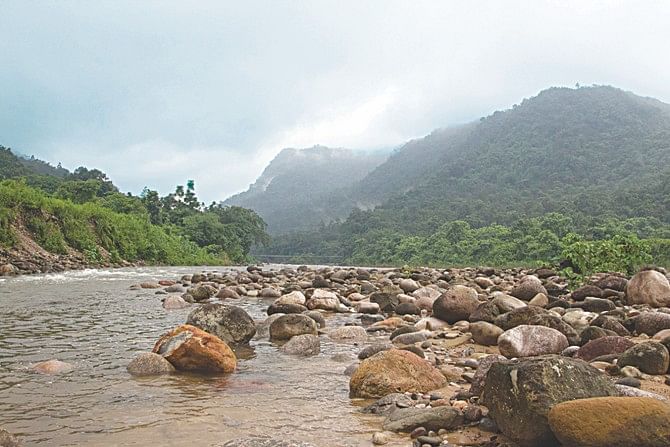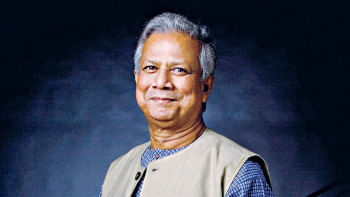Bisnakandi

I first heard about Bisnakandi last year on my way to Pantomai, a border village in north Gowainghat Upazila. Md. Foyzul Islam, the local Union Parishad Chairman, was with me. I remarked what a beautiful place Gowainghat was, nestled between the Meghalaya hills and the plains of Sylhet. Foyzul suggested if I wanted to visit beautiful spots in the area I should consider Bisnakandi.
Thus it was that one rainy morning that I set out towards Bisnakandi from Sylhet. The road took me through Amborkhana towards the airport. A right turn before the airport led us towards a large bridge over the river Gowain. We crossed the stone-crushing centre of Dhupagol where small mountains of rocks – all different sizes and colours - lined the road. The road itself was full of gigantic potholes, though whether it was worse than my trip here last year was unclear.
At Shalutikor Bazar we made a sharp right and headed towards Hadar Par, the launching point for Bisnakandi. After more jarring potholes, the road became narrow but reasonably well-maintained. The rains had inundated farmland on both sides. On the left, beyond the inundated fields, the clouds collided with the towering Khasi Hills. At one place – Damari – plants grew out of the water and twisted and turned into themselves, creating unexpected reflections in the water.
After parking in Hadar Par, we walked through the market to Eidgah Ghat on the Piyain river where, even in this early hour, a dozen engine boats waited for tourists.
Our rental boat followed the Piyain for perhaps three kilometres to a Y junction on the river. The Piyain continued on the right; we took the wide canal on the left. Normally this is the site of furious stone-collection activity, but the high water levels dampened this. The tops of submerged pyramids of stone punctuated the water's surface. A few diehard workers kept searching for pebbles to fill their boats with.
The hills in India loomed unexpectedly through the clouds like distant sentinels. As we got closer, I saw that the two closest hills here were separated by a canyon. Bangladesh ended where the hills started, but the view was breathtaking. Our boat came to a stop at a small island of stone, right at the border.
On a sunnier day it would have been a great place to frolic in the shallow water and play among the rocks. But today the sky was grey, water levels high and the current forceful. Hence there were few visitors.
Bisnakandi is actually a village of three thousand near this vista point. Inhabitants are mostly migrant labourers working in the stone business. These stones keep construction going in Bangladesh.
After spending about an hour at this vista point photographing the clouds playing hide-and-seek with the mountain peaks and the crystal clear water running over the stones, I decided to head back.
So that was Bisnakandi. Perhaps I was expecting more. But then I had spent many a summer day as a child playing among the rocks and water in Jaflong. With today's Jaflong groaning under the weight of the stone crushers, perhaps Bisnakandi is now what Jaflong was yesterday.
www.facebook.com/tangents.ikabir

 For all latest news, follow The Daily Star's Google News channel.
For all latest news, follow The Daily Star's Google News channel. 



Comments